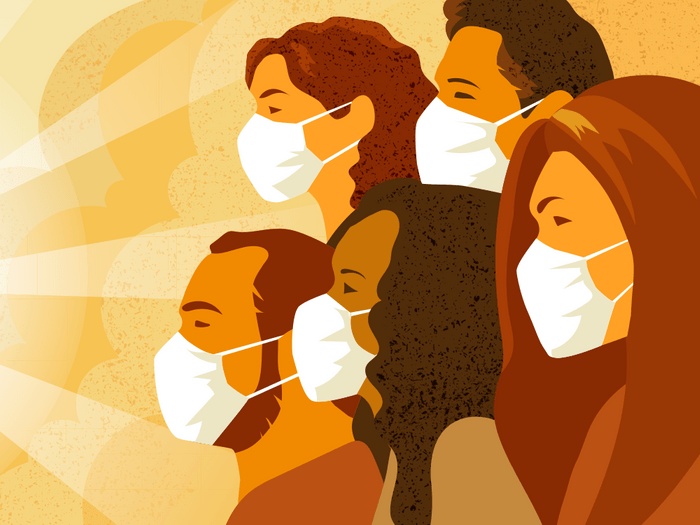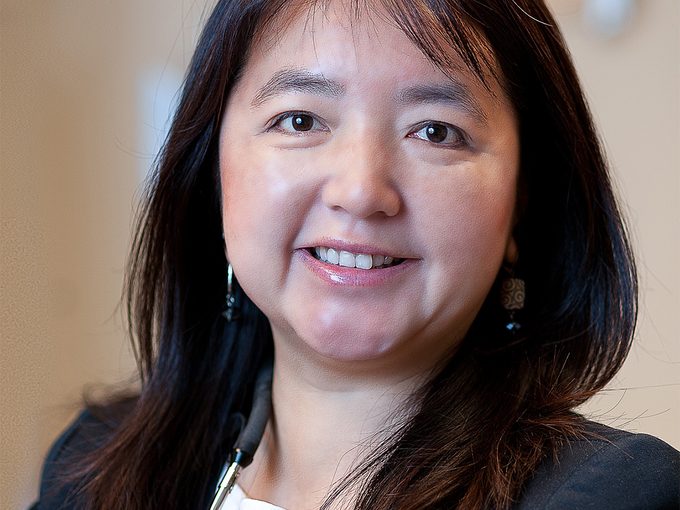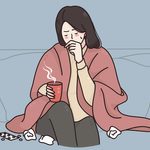What You Need to Know About Long COVID, According to a Long COVID Researcher

Dr. Angela Cheung is leading multiple studies to learn more about long COVID and create treatment plans for Canadians.
Months after contracting COVID-19, many Canadians are still battling lingering symptoms ranging from shortness of breath and fatigue to a loss of taste and smell.
“The official name is post-COVID condition, which occurs in individuals with a history of probable or confirmed SARS COV-2 infection, usually three months from the onset of COVID-19 with symptoms that can last for at least two months, and it cannot be explained by an alternative diagnosis,” says Dr. Angela Cheung, a senior physician and scientist at the University Health Network in Toronto. Cheung is leading multiple studies to learn more about the disease and create treatment plans for Canadians. Her description of long COVID is based on the definition from the World Health Organization (WHO), and Cheung says that based on current research, 10 to 50 percent of COVID patients will develop long COVID.
We spoke to Cheung about long COVID’s effects, potential treatments and how the disease might impact Canada’s health care systems in the future.
What are some of the most common long COVID symptoms?
Fatigue, shortness of breath, cognitive impairment or dysfunction, sleep issues, and tachycardia or heart palpitations. Those are some of the common symptoms, but there are as many as 200 symptoms.
What are some of the less common symptoms?
Change in smell and taste. Muscle aches and pains, joint pains as well are other issues. But I think the most concerning thing is that a number of these patients can’t go back to their usual activities. Some studies are saying that around 10 percent of people experiencing long COVID have symptoms that are severe enough they can’t go back to their usual activities.
And what might that mean for someone’s quality of life and livelihood?
There’s a wide range of severity [of symptoms]. For some people, it’s more of a nuisance and they continue to do their daily activities. Other people can’t work, they can’t look after their families, they are debilitated and spend the day in bed.
Aside from the physical symptoms of long COVID, how is this condition impacting mental health?
As you can imagine, it can be quite scary. We have some highly physically active people, like people who’ve been running marathons, who now have trouble walking a block … that can be very scary and can cause anxiety and depression. Plus, there’s the unknown of not knowing if this will be for their whole life. For some patients, they’ve lost their whole family and they have post-traumatic stress disorder (PTSD). And the sicker you were, the higher the likelihood of having anxiety, depression and PTSD. When someone is confronted with an unknown and unexpected disease, like cancer for example, people have similar [mental health] symptoms.
(Related: How to Embrace Your Sexuality After a Cancer Diagnosis)

There’s been a lot of discussion around the burden that the pandemic has put on women, particularly mothers. What might long COVID mean for women’s recovery after the pandemic?
It’s definitely harder for women because women often have multiple roles that affect both the workplace and the home front. When a patient tells me they don’t see improvement in their symptoms, I ask them what they’re doing at home. Because if they’re not working outside [because of their symptoms], what they may be doing is looking after kids more and doing more housework and looking after their parents and not resting.
We are still understanding the scope of this problem, but what could long COVID mean for Canada’s health care systems down the line?
So, we know how many people have had COVID in Canada, it’s estimated that that’s more than 3.1 million people across Canada. If we take the low end of the 10 percent estimate [of long COVID occurrences] that’s more than 300,000 people with long COVID. But we think it’s more than that.
It’s going to increase health care utilization. People will want to see specialists and there will certainly be many issues. Not only in terms of accessing health care, but the loss of productivity and loss of salary and livelihoods.
Can you tell me about some of the research you and your colleagues are working on right now?
There are multiple studies we’re working on. One is called CanCov—it’s a study that’s been going on now for over a year. We’ve recruited more than 2,000 participants across five provinces and 18 centres across a severity of illness and we’re following them. What we have learned is that one, our first COVID patient in Canada was diagnosed on January 25, 2020. But through antibody testing, we found a COVID-19 case on December 25, 2019. The second thing that we learned is that those who have more severe diseases, like those who have survived the ICU, have the highest antibody levels compared to those who were not hospitalized.
We also have a randomized adaptive platform trial called RECLAIM (Recovering from COVID-19 Lingering Symptoms Adaptive Integrative Medicine), and we are testing various therapies for long COVID.
From what we’ve learned, we have developed some treatments and have been using them in rehab across the country and testing out if there are better ways than what we’re currently doing to treat COVID patients so they can recover faster.
What can you tell us about these long COVID treatment programs?
For COVID-19, we want them to move, but we don’t want to push them too much because they can relapse or have flare-ups. We have adopted some pathways for rehabilitation, depending on how much a person can do and where their threshold is as well, in terms of trying to do things under that threshold. In general, people do improve over time if they do it right though there can be bumps on the way if people exert too much and relapse.
There are self-management programs. Because there’s so many people, you can’t really get them all into rehab, so we focus on education. So, for example, we teach patients that they have a pot of energy and physical, mental and emotional exertion takes energy from this pot. Then, if they relapse, they have to look back and see what they did the last few days. Some patients have said, “watching a sad movie makes me totally exhausted” because it taps into the emotional piece.
Are there any in-patient treatments being done right now?
Yes, there are in-patient treatments that work with physiotherapists and occupational therapists. The principles are quite similar. [Professionals] have to gauge what [patients] can do, and then try to progress them but keep under that [energy] threshold. Usually, we try to do the activities of daily living first. That means if someone takes a shower and they feel exhausted and have a flare-up after, then we try to teach them what to do so that they’re not exerting themselves to take that shower.
The treatments we’ve been talking about so far are mostly targeting energy and fatigue. Are there treatments to help with other symptoms?
For sure. So, for example, with shortness of breath, we teach people to take deep breaths in slowly and expand their lungs. At the maximum end of an inhalation, you take a little bit more in. And then slowly let it out, and at the end of the exhalation, try to squeeze the last piece of air out. And you want to do that cycle for six to 10 seconds. It gives you a sense of slow breathing and strengthens the breathing muscles—you have muscles in between your ribs and muscles in your diaphragm that help move your lungs. For most people [the shortness of breath is] a muscle issue, not a lung issue—unless they have prior lung disease. The additional advantage of the breathing exercises is that it modulates your autonomic system.
We’ve been talking through the pandemic about how our health care system isn’t built this level of demand. What will it take to accommodate all this future need?
We need to advocate for more long COVID clinics that can look after patients. We need family physicians to be on board and to know how to treat long COVID patients. We need to open rehab facilities.
Our health care system on a good day prior to the pandemic was a bit stretched. I’m a general internist and I work in an acute care hospital, so every year, especially in the winter when there’s flu and we are very stretched, we have patients in the hallway. The problem is most rehab is not funded by the government in most provinces, so are these [costs] going to come out of pocket for the patient? How are people going to access care? There are many, many questions.
This interview has been edited for length and clarity.
Next, here’s what you need to know about whether you’ll need a fourth COVID vaccine dose.




